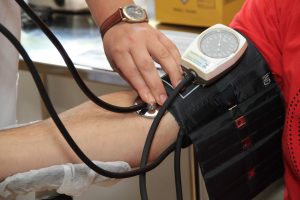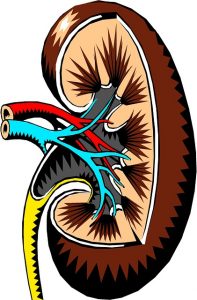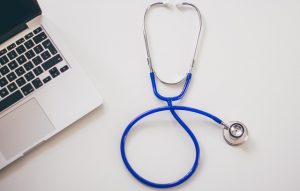If you are a foreign medical student or graduate and you want to get matched to a residency program in the United States, the first thing you need to do to prepare is to get certified through the Education Commission for Foreign Medical Graduates (ECFMG). Before your certification can be verified, you must pass all three steps of the United States Medical Licensing Exam (USMLE). In two previous posts, we provided an overview of the USMLE Step 1 and advice on how to construct a study strategy to prepare yourself for success on test day. Today, we are going to start talking about the USMLE Step 2.
The USMLE Step 2 is actually divided into two parts: Step 2 CS (Clinical Skills) and Step 2 CK (Clinical Knowledge). Today’s post is going to focus on Step 2 CS. Read on to learn more about this essential exam!
The Basics of the USMLE Step 2 CS
Both parts of the USMLE Step 2 evaluate your ability to apply your knowledge of medicine in practical clinical settings. One these exams, you will be expected to show that you can implement strategies to prevent disease and promote health and wellness through effective patient care.
As the name implies, the Step 2 CS focuses specifically on examining your clinical skills. The test focuses on three aspects of clinical practice:
- Obtaining health-related information from patients
- Conducting physical examinations
- Effectively communicating patient information to other health care providers
By demonstrating your competency in these areas, you can get the passing score you need to earn ECFMG certification.
The Format of the USMLE Step 2 CS
Unlike the USMLE Step 1, the USMLE Step 2 CS is not a written exam. Instead, it is a real-world exam where you are evaluated on the skills you demonstrate in mock scenarios of patient encounters. Essentially, test day simulates a day in the life of a physician in clinical practice. The exam itself is divided into three major sections. The On-Site Orientation, the Patient Encounter, and the Patient Note.
- The On-Site Orientation
Some of the details of the USMLE Step 2 CS inevitably vary depending on the facility where the exam is given — such as how you are expected to move between rooms during different protions of the test. But you don’t need to worry, because everything will be explained during the on-site orientation. You are not scored on anything during this part of the exam, so all you have to do is listen to the instructions and familiarize yourself with the expectations for the facility. That way, when your patient encounters begin, you won’t feel lost or uncertain about where to go or what to do.
- The Patient Encounters
In total, you will complete twelve patient encounters during the USMLE Step 2 CS. You will have a total of 15 minutes for each one, but you may be able to complete them in less time. It is important to note that not all twelve of the encounters are scored — some are pilot test cases that will be used by the test-makers for research purposes — but on test day, you will not be able to distinguish between them. There are two types of patient encounters on the USMLE Step 2 CS: the Standardized Patient and Physical Examination, and the Telephone Patient Encounters. In both, you will be expected to act professionally and apply clinical skills to the patient-centered problem you face.
- The Patient Notes
Immediately following each one of the twelve Patient Encounters, you will need to complete a Patient Note. The Patient Note is the only written part of the USMLE Step 2 CS. This part of the exam involves using a computer to record details about the Patient Encounter in the patient’s medical record. Essentially, it is the same thing that you would do as a physician after meeting with a patient in a clinical setting or talking to the patients on the phone. For each Patient Encounter, you will be given ten minutes to complete the associated Patient Note. However, if you finish your Patient Encounter early, you can spend the additional time working on the Patient Note.
USMLE Step 2 CS Scheduling
Because of the complex format of the USMLE Step 2 CS, it is only offered on certain days and in certain places. You can find calendar and scheduling information on the ECFMG website after you obtain your identification number. From there, you can choose the date and location that work best for you! It is important to note that the USMLE Step 1, USMLE Step 2 CS, and USMLE Step 2 CK can be taken in any order, so when you choose your test date, the order of these three exams does not make a difference.
Need more help with the process of getting matched to a U.S. medical residency program? Contact FMG Portal today to learn more about all of the resources we offer!












